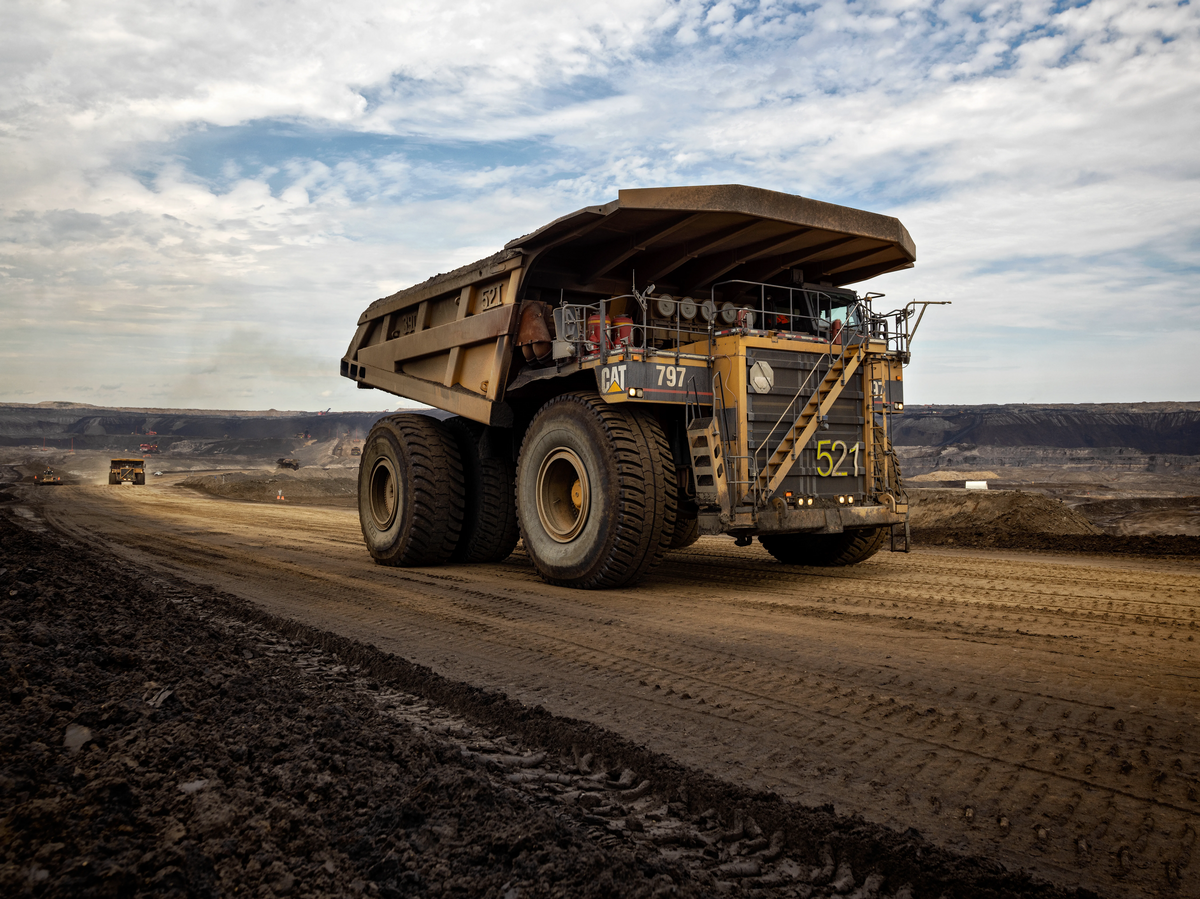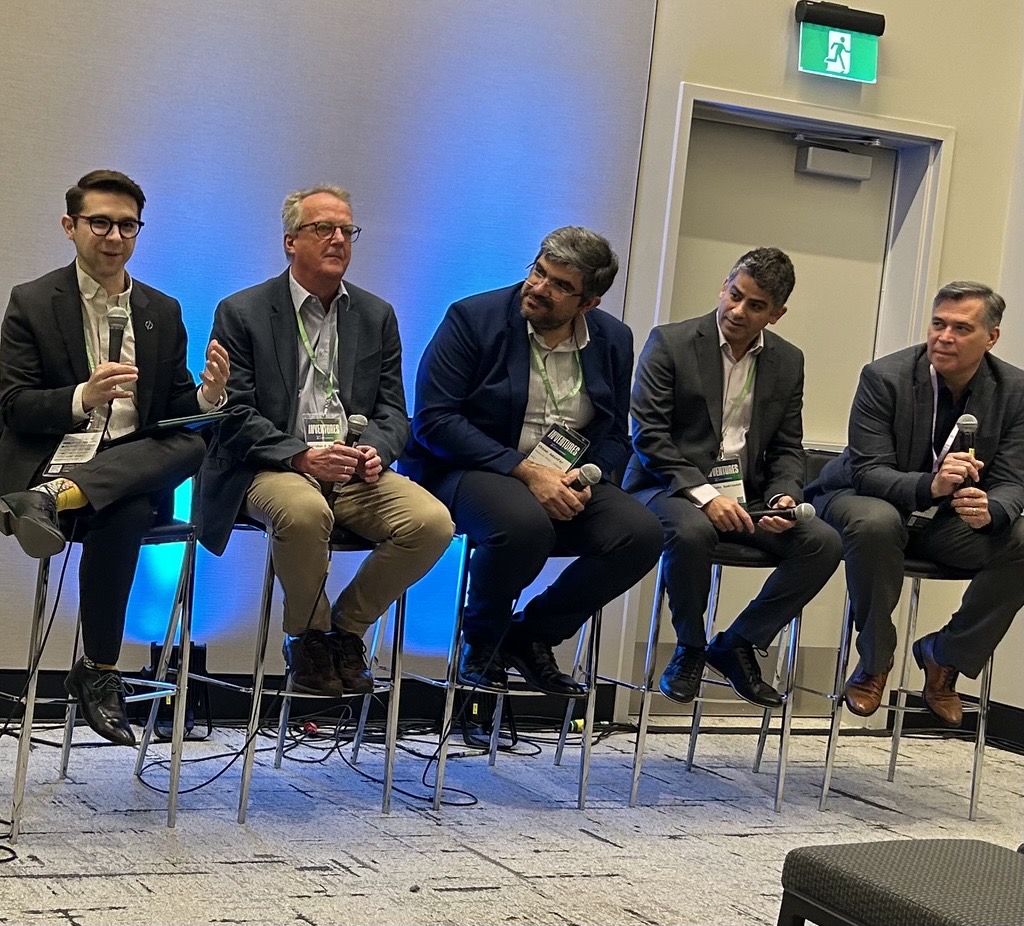How it works: Oil sands surface mining 101
August 26, 2025

Canada has the fourth-largest oil reserves in the world, and 97% of these are located in the oil sands region in northern Alberta[1]. Oil sands are a naturally occurring mixture of sand, clay, water and bitumen (which is a heavy, viscous form of crude oil).
In its natural state, the bitumen contained in the oil sands is very thick. With a consistency like peanut butter, it is unable to flow on its own, and specific methods are needed to recover it.
Approximately 80% of the bitumen in the oil sands is located deep underground and recovered using in situ, or in-place, extraction methods. With these methods, steam is injected underground to heat the bitumen, making it less viscous so it can be pumped to surface. The remaining 20% of the bitumen in the oil sands is very near to the surface (less than 75 metres deep), so surface mining and what’s known as the Clark hot water separation process, can be used to recover the resource[2].
Oil sands mines go through stages that include planning and design, project approvals, construction, active mining and processing and reclamation and closure[3]. Learn more below about the different stages of mining.
Planning and approvals:
Before mining begins, producers develop integrated plans to map out the life cycle of a mine, from operations through to closure, including tailings management. Plans are filed with the Alberta Energy Regulator (AER) and consultation with Indigenous communities and other local stakeholders is conducted to identify and mitigate concerns around the planned mine and closure. This is an iterative process, and community engagement continues throughout the mine’s life. An environmental impact assessment, which is an assessment of the potential environmental effects of the proposed mine, must also be completed.
Once the AER grants approval, producers must continue to meet all regulations and requirements through the full project lifecycle. This includes reclamation, a portion of which takes place progressively during the active mining phase wherein areas of the mine that are no longer needed for operations can be reclaimed even while mining is still occurring.
Research and monitoring are conducted continually, which provides data to inform the mine plans. Annual plans and reports are submitted to the regulator detailing activity as the project evolves. As part of an adaptive management approach, when new data, reclamation techniques or other information becomes available, it is used to inform future practices and approaches. Regulations can also evolve as new information becomes available. Updated life-of-mine plans are submitted to the AER for approval as needed in response to adaptive management or regulatory changes.
Construction, active mining & processing:
- First, operators coordinate with local timber companies to clear the mine development area of trees and vegetation.
- Once trees and vegetation have been removed, water diversions or ditches are constructed to direct surface water and shallow ground water either around the active mine site or to collection ponds, which are monitored and released back to the local water ways.
- Equipment is then used to remove layers of soil, The soil is salvaged as per regulatory requirements and is either stockpiled for future reclamation use, or if the opportunity exists, is transported and placed on areas that are ready to be reclaimed as part of progressive reclamation.[4].
- Once the soil, muskeg and other organic material is removed, there is a layer of mineral material called overburden (made up of clays, silts, sands and boulders) which must be removed. This material is removed using heavy equipment and is then used for construction of dams, roads and pads, or is placed in overburden stockpiles.
- Once all the overlying material is removed, the oil sands ore can then be extracted. Large shovels scoop the oil sands into heavy haul trucks.
- The trucks then transport the oil sands ore to a crusher where it is broken down into smaller pieces and mixed with hot water. Air is also injected into the mixture because, like hot water, it helps separate the bitumen from the rest of the materials.
- This mixture of oil sands, water and air is sent through a pipeline (also known as a slurry conditioning line) to an extraction plant. Once at the plant, the mixture is passed through a pipeline loop within the facility to help break up the particles and ease separation. It then goes to a separation tank where the bitumen rises to the surface and is skimmed off. Learn more about the Clark hot water separation process, which was patented in the 1920s by Dr. Karl Clark of the University of Alberta.
- The bitumen that is skimmed from the separation tank still contains water and fine particles, and is referred to as a “froth”. A lighter hydrocarbon or diluent is added which helps remove excess water and particles from the bitumen.
- From here, the bitumen is typically sent to an upgrader for processing. Since bitumen is made up of many complex molecules, it usually needs to be broken down before going to a refinery. Upgrading helps break up the molecules, remove impurities, and reduce the bitumen’s viscosity. In some cases, depending on how the bitumen is processed by the operator after separation, further upgrading isn’t needed, and it can go directly to the refinery.
- Once at the refinery, the crude oil is then processed into end use products, such as gasoline, that are sold to consumers.
- The material that’s leftover after bitumen is removed is referred to as tailings. Oil sands tailings are made up of sand, clay, water and residual hydrocarbons. The tailings are deposited in facilities referred to as tailings ponds. The greatest volume of tailings is coarse sand which is used for construction of tailings facilities and mixed with finer tailings streams to develop deposits that can be reclaimed as per each mine’s closure plan. As water is released from tailings through settlement and treatment, it is recycled back to the extraction plant.
- The remaining tailings are managed separately in alignment with the integrated tailings management plan which is developed at the project application stage and updated as needed during the life of the mine.
Did you know? In 2023, 79% of the water used for oil sands mining was recycled water[5].
Reclamation and closure:
Reclamation takes place progressively during the active mining phase. Parts of the mine that are no longer needed for operations can be reclaimed even while mining is still occurring. Once mining is finished, operators follow the mine closure plans to create a landscape comparable to what can be found in the Alberta Boreal Forest. The planned closure landscapes for current mines include both terrestrial (land) landscapes and aquatic (water) landscapes. Groundwater, wildlife and vegetation are monitored during the life of the mine and during reclamation.
As part of reclamation efforts, Canada’s Oil Sands Innovation Alliance (COSIA) and its members have a vegetation cooperative to collect and store seeds to be used to return to native species after mining. Working together with Indigenous groups, ecologists, seed scientists and nursery professionals, knowledge is shared on native species and revegetation practices across oil sands operators. Members of the cooperative also support research on seed science, storage and longevity, propagation and establishment of boreal native species. Since 2009, the cooperative has commissioned annual seed harvests and, to date, has harvested over 231 million seeds representing 50 individual species. [6]
Did you know? Canada’s Oil Sands Innovation Alliance (COSIA) is the innovation arm of Pathways Alliance. Its members are focused on collaborative action and innovation in oil sands environmental technology in four key Environmental Priority Areas, or EPAs: tailings, water, land and greenhouse gases
[1] “Energy Fact Book 2024–2025.” Natural Resources Canada, 2024.
[2] Oil sands 101 | Alberta.ca
[3] The terms reclaimed and reclamation are used in reference to the activities of reclamation and don’t necessarily indicate “Permanent Reclamation” or “Certified” land status have been designated as per the Alberta Energy Regulators (AER) Specified Enactment Direction (SED) 001 and 003.
[4] AER – What Really Happens at an Oil Sands Mine?
[5] Water Use Performance | Alberta Energy Regulator
[6] Restoration Resource Center Oil Sands Vegetation Cooperative (OSVC): A Collaborative Initiative for Sustainable Plant Community Establishment

